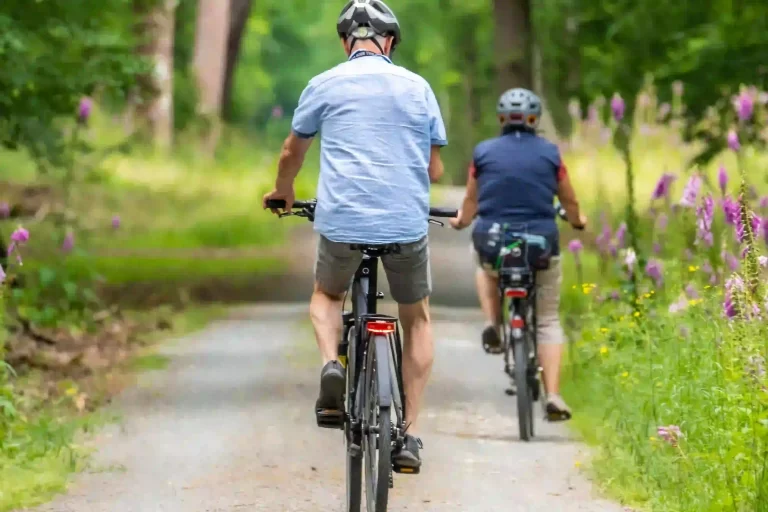Behind the Wheel: When Cyclists and Alcohol Mix
Behind the Wheel When Cyclists and Alcohol Mix. Have you ever been cycling after a couple of drinks? Maybe you threw back a few beers while watching the Tour de France and then decided to go for an evening ride to emulate your heroes. Or perhaps wine with dinner turned into a moonlight bike ride with friends. Cycling and alcohol can seem like a fun combination, especially on a warm summer night but it’s risky business.

When your balance and coordination are impaired two wheels can easily turn into a dangerous situation. Before you hop on your bike after imbibing know the facts about cycling under the influence and how it impacts your safety the rules of the road and your legal rights. Your life could depend on it.
The Culture of Drinking in Cycling
Cycling and beer go together like peanut butter and jelly for many riders. The post-ride brewski is practically a tradition. But drinking too much too often can be a real problem in the sport.
The post-ride pint
After a long hard ride, nothing tastes better than an ice-cold beer. Many cyclists bond over a few pints at the local pub after training rides or races. For some, it’s the highlight of the whole experience.
While a single drink now and then is fine the “work hard play hard” mentality in cycling has led to some unhealthy binge drinking. Some riders feel pressure to keep up with teammates who can throw back far more than a responsible amount. This kind of overindulgence especially on a regular basis has serious downsides like dehydration reduced performance and addiction.
A cultural shift is needed
There needs to be a culture change around alcohol in cycling. Getting wasted every time you ride is not a sustainable or healthy long-term habit. Team leaders and coaches should discourage excessive post-ride drinking and set better examples.
Riders should also speak up if they feel uncomfortable with the amount of booze being consumed. Your health and safety should come before peer pressure. An occasional celebratory drink is great but moderation and responsible limits will help ensure cycling stays focused on the riding, not the partying.
With more balanced attitudes cycling can maintain its social traditions without the unhealthy extremes. Here’s to changing the culture one sober rider at a time.
The Dangers of Riding Under the Influence
Riding a bike after a few drinks seems harmless enough but the risks are real.
Impaired balance and coordination
After consuming alcohol your balance coordination and reaction times suffer. On a bike, this means you’re more prone to swerving wobbling and crashing. Even a minor tumble can lead to injuries when you’re inebriated.
Decreased awareness
Alcohol dulls your senses and awareness of your surroundings. You may not notice vehicle obstacles or other cyclists around you. This makes you an unpredictable and unsafe rider and you likely won’t react in time to avoid a collision.
Slower braking times
If you need to brake quickly alcohol will slow your reaction time and braking ability. At higher speeds, this can mean the difference between stopping safely and causing an accident.
Legal consequences
In many places cycling under the influence can land you a DUI heavy fines and even jail time. Save yourself the hassle and follow the same rules for bikes as you would for driving a vehicle.
The risks of riding after drinking far outweigh any benefits. Call a taxi rideshare or friend instead your safety and the safety of others on the road should be a top priority. Why gamble when there are so many other ways to get home? Be smart and avoid cycling if you’ve been drinking.
Promoting Responsible Drinking Among Cyclists
Promoting responsible drinking among cyclists is important for safety and health. As a cycling community, we need to set a good example.
Educating Riders
Educate fellow riders about the risks of drinking and cycling. Explain how alcohol impairs balance coordination and judgment all essential for safe riding. Share statistics on alcohol-related cycling accidents and deaths.
Promote the idea that cycling and drinking don’t mix. We want riders to understand that even one drink can be dangerous before getting on a bike. Suggest “one or the other not both” ride first and drink after or vice versa.
Setting a Good Example
Practice what you preach. Don’t drink excessively when out for rides or at cycling events. Set an example through your own responsible behavior.
If you do choose to drink do so in moderation and make alternate plans for getting home safely. Call a taxi or rideshare or designate a sober driver. Your actions speak louder than words.
Providing Alternatives
Offer non-alcoholic alternatives at cycling meetups and events. Have water, juice, soda, coffee, and snacks on hand for riders. Create an atmosphere where people feel comfortable not drinking.
Provide information on local cycling advocacy groups people can get involved in. Promote the social and community aspects of cycling to show there are rewarding parts of the sport that don’t revolve around alcohol.
By working together we can build a cycling culture where responsible safety-conscious behavior is the norm. Educate set a good example and provide alternatives these steps can help ensure that cyclists and alcohol don’t mix.
For more information:
- visit our site: Themotostreet
- wikipedia link: click here
Conclusion
There you have it the sobering truth about drinking and cycling. While a casual drink or two on a bike ride with friends may seem harmless the data shows the real risks involved. As with any impaired driving it’s just not worth the danger to yourself or others. The next time you gear up for a ride do yourself and everyone else on the road a favor and leave the alcohol behind. Your bike is not a barstool and the open road is no place for impaired judgment. Stay safe out there.





